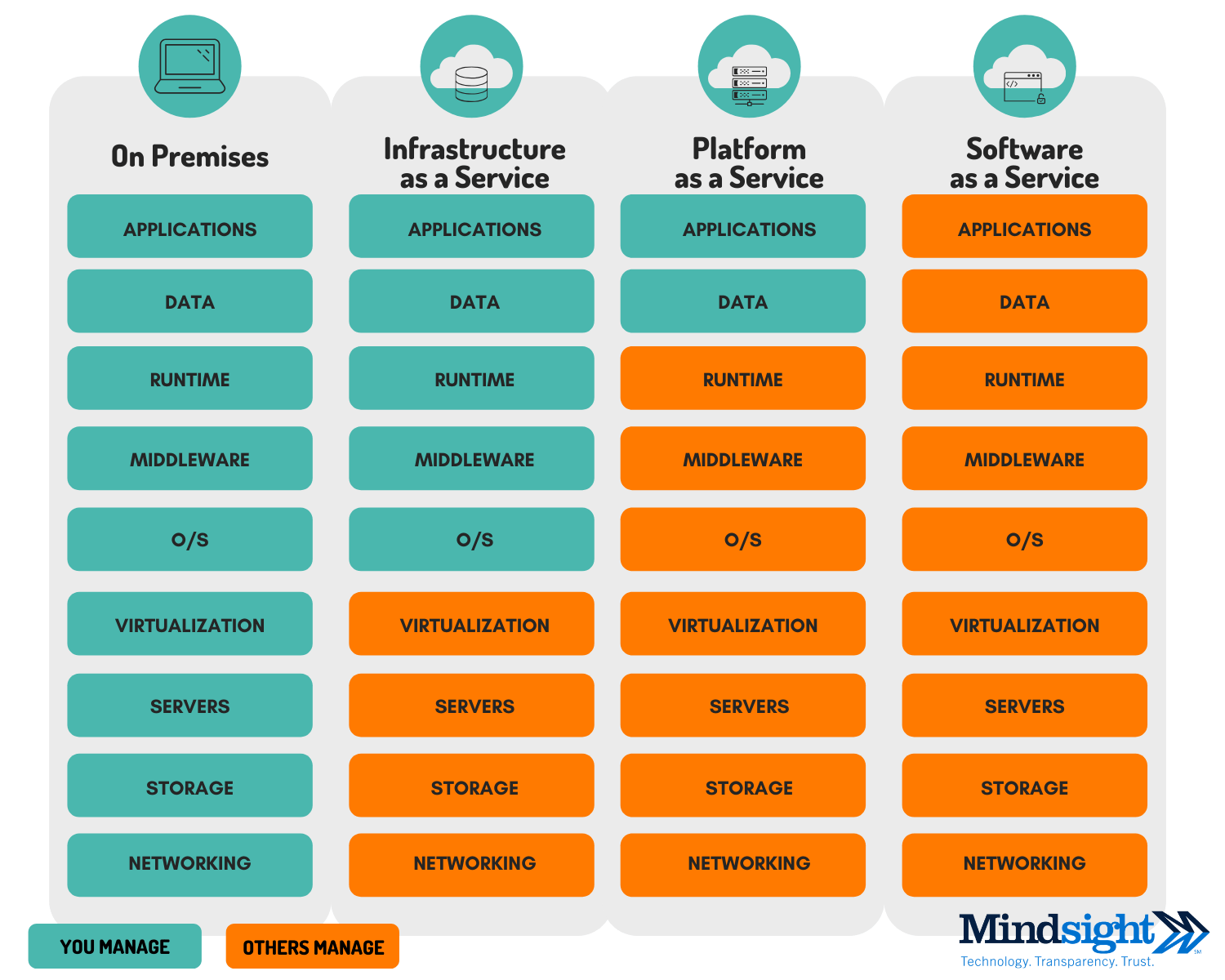Updated September 10, 2020 by Siobhan Climer and Mike Czerniak
The as-a-service label has been utilized in every facet of the technological sphere. In fact, there are some within the industry who advocate for an “everything-as-a-service” model, which is simply suggesting that anything can be commoditized – not the most radical statement ever.
Regardless, the as-a-service label is most often associated with cloud computing nomenclature. It refers to the different service models cloud providers offer. There are three main as-a-service categories:
- Infrastructure-as-a-Service (IaaS)
- Platform-as-a-Service (PaaS)
- Software-as-a-Service (SaaS)
In this article, we’ll unravel the differences, offer examples, and discuss the different use cases by which these models can offer you the most success.
What Is IaaS, PaaS, and SaaS?
The National Institute of Standards and Technology (NIST) recognizes three standard cloud computing models of as-a-service: Infrastructure-as-a-Service (IaaS), Platform-as-a-Service (PaaS), and Software-as-a-Service (SaaS).
In effect, each of these models offers a progressive level of abstraction – or management – by the cloud provider. In Figure 1 below, we use the typical technology stack to visualize the progressive service model.
Figure 1: Understanding IaaS, PaaS, and SaaS Cloud Service Models
Infrastructure-as-a-Service: IaaS Examples and Definitions
Definition: IaaS is the utilization of APIs to manage the lowest levels of network infrastructure, including networking, storage, servers, and virtualization.
Examples: Rackspace, Digital Ocean, Google Compute Engine, and some deployments of Microsoft Azure and Amazon Web Services (AWS)
Common Use Cases: IaaS is the most flexible service model for cloud computing, so it is especially effective for startups and organizations looking for agile scaling. It is also preferred by businesses that seek greater control over their resources.

Platform-as-a-Service: PaaS Examples and Definitions
Definition: PaaS offers an even greater abstraction of cloud service, offering users the capability to build or deploy applications using tools (i.e. programming languages, libraries, services) without maintaining the underlying infrastructure. Users instead have control over the applications themselves.
Examples: Salesforce, AWS Elastic Beanstalk, Heroku, Google App Engine (GAE), and OpenShift
Common Use Cases: PaaS is highly available and highly scalable, and it gives organizations the ability to build and create new services and solutions without the need for highly skilled developers focused on software maintenance. PaaS is preferred by IT in hybrid cloud environments.

Software-as-a-Service: SaaS Examples and Definitions
Definition: SaaS enables users to use and access the cloud provider’s applications that are running on the provider’s infrastructure from thin client or program interfaces.
Examples: There are loads: Google G-Suite, Dropbox, Cisco Webex, Concur, Microsoft O365, Genesys, PayPal
Common Use Cases: SaaS is a comfortable service model for applications that are highly interoperable – used by multiple users internally and externally – and for short-term projects. SaaS models are preferred by small and medium-sized businesses that do not wish to invest heavily in IT maintenance.

Benefits Of As-A-Service Cloud Models
Each as-a-service model offers a unique set of benefits befitting your specific use case. Traditionally, organizations use a mix of these different models for different aspects of the business; for example, an organization may use the Salesforce platform (PaaS) and Google Docs (SaaS).
Find out which model best matches your current needs and plans for the future. Talk to a Mindsight engineer today to receive your Cloud Insights Report.
Like what you read?
Contact us today to discuss
About Mindsight
Mindsight is industry recognized for delivering secure IT solutions and thought leadership that address your infrastructure and communications needs. Our engineers are expert level only – and they’re known as the most respected and valued engineering team based in Chicago, serving emerging to enterprise organizations around the globe. That’s why clients trust Mindsight as an extension of their IT team.
Visit us at http://www.gomindsight.com.
About The Authors
Mike Czerniak is the Cloud Practice Manager at Mindsight, an IT Services and Consulting firm located in the Chicago area. With 20 years of experience in information technology and the cloud, Mike has helped hundreds of organizations with architecting, implementing, and deploying cloud solutions. For the last 5 years, Mike has focused on providing Mindsight’s customers with guidance in approaching – and managing – the cloud. Mike is AWS, Microsoft Azure, VMware certified, and remains deeply invested in providing an agnostic, consultative voice for organizations on their cloud journey. In his free time, Mike enjoys biking with his 9-year old son, recently completing a 50-mile bike ride!.
Siobhan Climer writes about technology trends in education, healthcare, and business. With over a decade of experience communicating complex concepts around everything from cybersecurity to neuroscience, Siobhan is an expert at breaking down technical and scientific principles so that everyone takes away valuable insights. When she’s not writing tech, she’s reading and writing fantasy, hiking, and exploring the world with her twin daughters. Find her on twitter @techtalksio.





